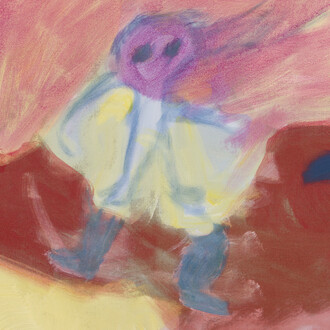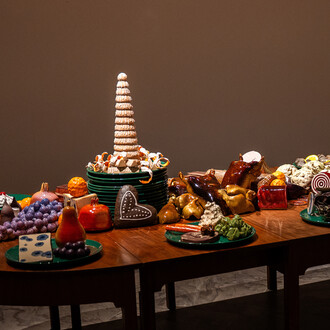The heart of the exhibition starring Egyptian artist Wael Shawky is his famous puppet film trilogy Cabaret Crusades, shown for the first time in Denmark. The exhibition also presents a rich selection of other works, including puppets featured in the films, vast wooden reliefs, drawings, photographs and collages – and an entirely new, site specific work that takes the form of a 50-metre wall. The trilogy Cabaret Crusades relate the history of the medieval Crusades in the Middle East – seen from an Arab point of view. Taking his point of departure in original historical sources and an innovative use of marionettes, Shawky re-enacts historic events from the distant past, focusing on the complicated relationship between the West and the Middle East. He depicts a past characterised by fierce conflict and violent clashes that continue to inform the relationship between the West and Middle East today, giving us a chance to see the Crusades and our own present day in a new light.
Shawky’s trilogy offers a dramatic, even theatrical retelling of a series of historic events, related in chronological order: from the speech given by Pope Urban II, launching the First Crusade in 1095, all the way up to the destruction of Constantinople in 1204. Even though several of the key characters, such as the Muslim general Saladin and Richard the Lionheart, king of England, are celebrated as heroes in many of the legends that still survive today, Shawky’s films have no heroes. Noone is unequivocally good or evil.
The marionettes wear Oriental clothes and knightly armour. They appear in front of Arab and European settings. Even though conspiracies, murder and massacres are the order of the day, the use of puppets makes the story of the Crusades less dramatic. They represent our common humanity, pulled by strings and by systems that control them – a symbol of the hidden power running through society. But who wields that hidden power? Shawky not only raises this question in relation to medieval power structures. By raising the same question today, he points to parallels connecting past to present.
In his large wooden panels, Shawky took his starting point in old European history paintings from the 16th and 19th century. He generally takes a critical view of the ways in which historical events have been recounted. In his panels and films alike, he often adds mythical elements to show us how historical accounts of the past are often untrue and distorted.
The music featured in the trilogy is an important aspect of the work, deliberately mixing different genres: from songs sung by Arab pearl divers to Egyptian electronica. This makes the films reminiscent of cabarets speaking truth to power.
Wael Shawky was born in Alexandria, Egypt, in 1971. After graduating from the Academy of Arts in Alexandria in 1994, he relocated to Philadelphia in the United States to get his MFA. Since his major breakthrough at Documenta 13 in 2012, he has won great international acclaim and success worldwide.
















